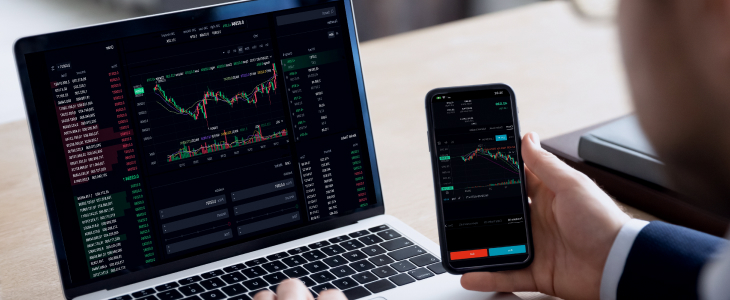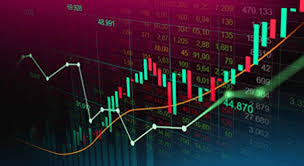
Forex Trading Beginner Guide: Master the Market with Confidence
Welcome to the world of Forex trading! For beginners, the journey into the foreign exchange market can seem overwhelming. However, with the right knowledge and tools, anyone can learn to trade successfully. In this guide, we will walk you through the essential aspects of Forex trading, including understanding the market, fundamental concepts, strategies for success, and resources to enhance your skills. For convenient trading experience, consider downloading a reliable forex trading beginner guide Trading App APK.
What is Forex Trading?
Forex trading, or foreign exchange trading, involves buying and selling currencies in the global marketplace. This market is the largest and most liquid in the world, with a daily trading volume exceeding $6 trillion. Unlike stock markets, the Forex market operates 24 hours a day, five days a week, making it accessible to traders around the globe.
Key Concepts in Forex Trading
1. Currency Pairs
Forex trading always involves pairs of currencies, such as EUR/USD (Euro/US Dollar) or GBP/JPY (British Pound/Japanese Yen). The first currency in the pair is the base currency, and the second is the quote currency. The price indicates how much of the quote currency is needed to purchase one unit of the base currency.
2. Spread
The spread is the difference between the bid price (the price at which you can sell) and the ask price (the price at which you can buy). It represents the cost of trading and can vary depending on market conditions and the broker’s pricing model.
3. Leverage
Leverage allows traders to control a larger position with a smaller amount of capital. For example, if a broker offers 100:1 leverage, a trader can control $100,000 in currency with only $1,000 in their trading account. While leverage can amplify gains, it also increases the risk of significant losses.

4. Pips
A pip is a unit of measurement for price movements in Forex trading. For most currency pairs, a pip is a change of 0.0001, while for pairs involving the Japanese yen, it is 0.01. Understanding pips is crucial for calculating profit and loss.
Types of Forex Trading Strategies
1. Day Trading
Day trading involves entering and exiting positions within the same trading day. Day traders capitalize on short-term price movements and do not hold positions overnight. It requires quick decision-making and a good understanding of market trends.
2. Swing Trading
Swing trading focuses on capturing price swings over a period of a few days to several weeks. Swing traders use technical analysis and market indicators to identify entry and exit points based on price trends.
3. Scalping
Scalping is a fast-paced trading strategy that involves making numerous trades throughout the day to capture small price movements. Scalpers often execute trades in seconds or minutes, requiring high concentration and quick execution.
Essential Tools for Forex Trading
1. Trading Platform
A robust trading platform is essential for executing trades, analyzing market trends, and managing your account. Popular platforms include MetaTrader 4 (MT4), MetaTrader 5 (MT5), and various mobile applications.

2. Economic Calendar
Staying informed about important economic events and announcements is critical for Forex traders. An economic calendar provides valuable information on scheduled events that can impact currency prices, such as interest rate decisions, employment reports, and GDP releases.
3. Technical Analysis Tools
Technical analysis involves analyzing price charts and using indicators to forecast future price movements. Traders often use tools like moving averages, RSI (Relative Strength Index), and MACD (Moving Average Convergence Divergence) to make informed decisions.
Risk Management in Forex Trading
Effective risk management is crucial for long-term success in Forex trading. Here are essential tips to help manage your risk:
- Set a Trading Plan: Define your trading goals, risk tolerance, and strategies in a trading plan.
- Use Stop-Loss Orders: Always place stop-loss orders to limit potential losses on any trade.
- Risk Only What You Can Afford to Lose: Never risk more money than you can afford to lose on any single trade.
- Diversify Your Trades: Avoid putting all your capital into one currency pair; diversify to spread risk.
Education and Continuous Learning
Forex trading is a continually evolving field. To improve your trading skills, it is essential to engage in ongoing education and learning. Here are a few ways to enhance your knowledge:
- Online Courses: Many platforms offer online courses specifically designed to teach Forex trading fundamentals.
- Webinars and Workshops: Participate in live webinars and workshops hosted by expert traders.
- Trading Forums: Join Forex trading communities and forums to share experiences and learn from others.
- Stay Updated: Follow financial news and reports to stay informed about market trends and economic factors affecting currency movements.
Conclusion
Forex trading can be a rewarding endeavor for those willing to invest time and effort into learning the market. By understanding the key concepts, applying effective trading strategies, and managing risks, beginners can navigate the Forex market with confidence. Remember to continually educate yourself and remain disciplined in your trading approach. Happy trading!